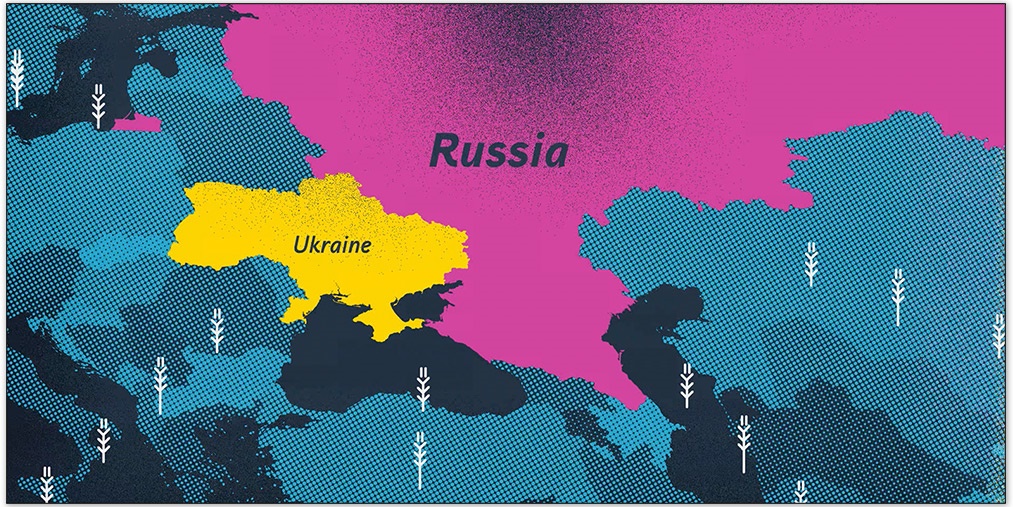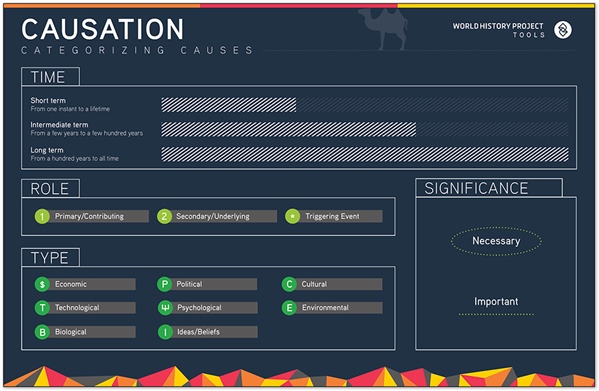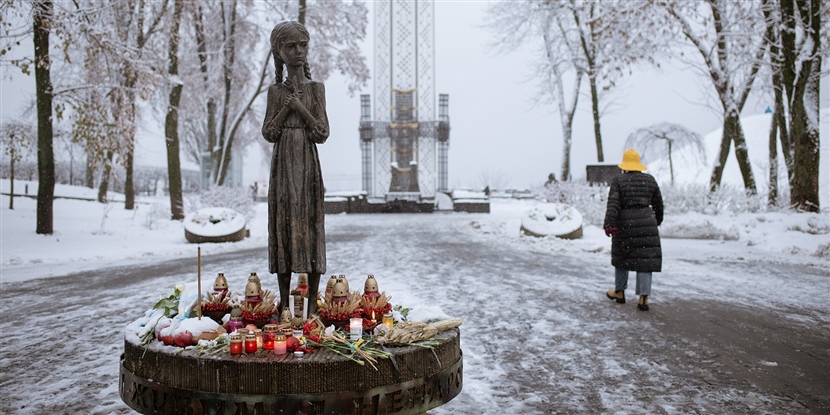By Bridgette Byrd O’Connor
How can studying historical causation help us draw a line from the past to the present and into the future? One of the main learning objectives of OER Project courses is for students to understand how the history that they learn is usable and informative both to their lives today and in the future. This also happens to be one of the main questions that students ask in their social studies classes: Why do I have to learn about stuff that happened so long ago?
As Bob Bain says in What Makes History Usable?, the introductory video to all World History Project (WHP) courses: “We think that something meaningful [students] can learn is to use their history skills to put facts together to tell stories and to evaluate others’ stories about the global past.” We not only want students to think about the global past but also about how the past informs the present. Usable history can help students prepare for what the future might hold.
An essential historical thinking practice that can help students understand the concept of a usable history is causation. Thinking causally helps students understand causes and effects, and it helps them examine historical events by contemplating multiple causes. But causal thinking can also help them make sense of the present and the future. In the video What Makes History Usable?, Bain focuses on a broad causal question that asks students to think about why people throughout history moved in and out of the Detroit area. This question draws students into causal thinking and connects history to something familiar—their hometown of Detroit—while also allowing them to see how migration shaped Detroit’s past, how it influences the present, and how students can use this information to assess the future. You could use a similar question in your own classrooms or expand the scale to ask students to think about the causes and effects of natural disasters, population growth, or environmental change. How might things in their hometown, local environment, or family connect to these big changes? Starting with a broad causal question that’s tied to something that impacts your students personally helps them see how the past affects the present, and enables them to predict what might happen in the future.

Global grain shortages are one consequence of Russia’s invasion of Ukraine. How did this happen? Video still from Solving the Maize: A Big History of Food, by OER Project, CC BY-NC 4.0.
Utilizing causal thinking is also a great way to help your students analyze current events. For example, as we approach the one-year anniversary of the war in Ukraine, you could ask students to create a causal map of the causes of this war. You might categorize the causes into long-, intermediate-, and short-term using OER Project’s Causation Tool to show how those causes extend back farther than many students might think. Students can categorize causes by type, using the categories in the Causation Tool to indicate that this is not simply a political war but rather one that has cultural, psychological, economic, environmental, and ideological causes. Finally, you could ask students to build out their causal maps by adding the consequences of this war to demonstrate how a war in one region can affect people across the world. For example, the war has had disastrous implications for our global food systems, and many people are now dealing with global grain shortages. Analyzing the causes and consequences of current events will help students grasp the concept that history is both usable and useful in their lives.

Causation Tool poster. Click to enlarge. By OER Project, CC BY-NC 4.0.
Want to know more about how to practice historical causation in your classroom? Check out this conversation in the OER Project Teacher Community for a link to the Causation poster, an Alphonse the Camel lesson plan, and pro tips from veteran OER Project teachers. While you’re over there, feel free to share lesson ideas about how you utilize causal thinking to help students make connections to the past, present, and future.
About the author: Bridgette Byrd O’Connor holds a DPhil in history from the University of Oxford and taught the Big History Project and World History Project courses and AP® US government and politics for 10 years at the high-school level. In addition, she’s been a freelance writer and editor for the Crash Course World History and US History curricula. She’s currently a content manager for the OER Project.
Cover image: Victims of the Holodomor commemorated despite the snow in Kyiv, November 27, 2022. © André Luis Alves/Anadolu Agency via Getty Images.
 For full access to all OER Project resources AND our amazing teacher community,
For full access to all OER Project resources AND our amazing teacher community, 
Top Comments